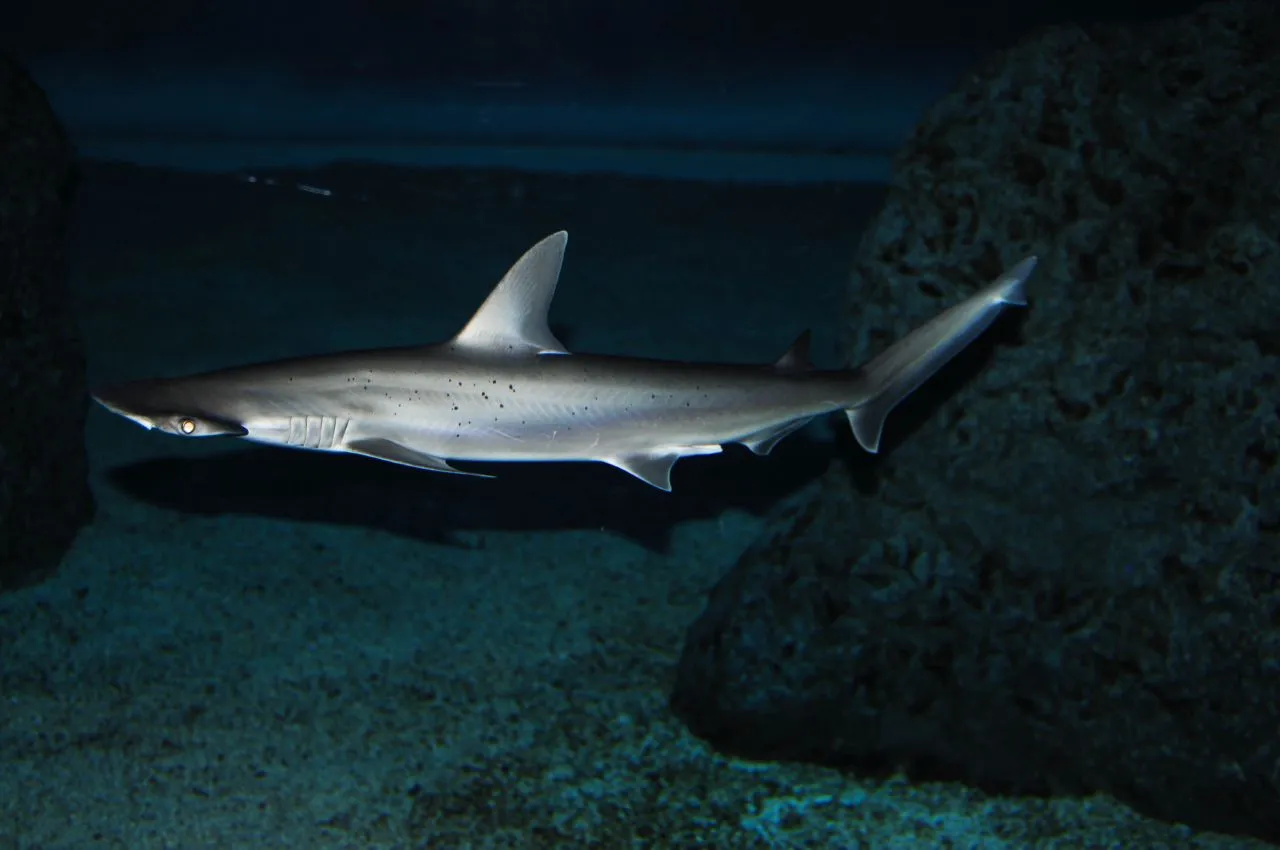
Bonnethead Shark
Bonnethead Shark
Bonnethead Shark
When it comes to sharks with unique head shapes, the hammerhead shark comes to mind! Among them, the smallest is the bonnethead shark. Why do they have such a strange head shape? Let's explore the ecology of the bonnethead shark and the challenges they face.
Bonnethead Shark Basic Infomation

| Property | Value |
|---|---|
| Scientific Name | Sphyrna tiburo |
| Taxonomic Status | ACCEPTED |
| Rank | SPECIES |
| Vernacular Names | Bonnethead Shark |
| Kingdom | Animalia |
| Phylum | Chordata |
| Class | Chondrichthyes |
| Order | Carcharhiniformes |
| Family | Sphyrnidae |
| Genus | Sphyrna |
| Habitats | Coastal waters in the Atlantic and Pacific Oceans |
| Descriptions | The bonnethead shark is a small shark with a shovel-shaped head, mainly found in coastal areas and around coral reefs. |
| Conservation Status | Endangered |

Size
They grow to about 3.3 to 5 feet (1 to 1.5 meters) in length and weigh around 22 pounds (10 kilograms). They are the smallest of the hammerhead shark species.

Lifespan
Their lifespan is estimated to be about 17 to 18 years.

Distribution
They are widely distributed along the coasts of the Americas in the Atlantic and Pacific Oceans. They prefer warm waters, particularly the Gulf of Mexico and the Caribbean Sea.
Bonnethead Shark Q&A

What kind of shark is the bonnethead shark?
The bonnethead shark is a type of hammerhead shark, and as its name suggests, its head is laterally expanded, resembling a 'hammerhead.'
However, if you look closely, you'll see that they have four eyes, two on each end of their head. This laterally expanded head is called a 'cephalofoil,' and its shape resembles a 'hammer' or a 'shovel.' In English, they are called 'bonnethead sharks.' A 'bonnet' is a type of women's hat, and their head shape resembles a bonnet, which is how they got their name.

What is the secret behind the bonnethead shark's head shape?
The bonnethead shark's unique head shape is thought to serve several purposes.
・Wide field of vision: Their eyes are located on the cephalofoil, giving them a wider field of vision than other sharks. This helps them find prey and avoid predators.
・Enhanced sense of smell: The cephalofoil also acts as an olfactory organ. By swinging their cephalofoil from side to side, they can detect the scent of prey from a wider area.
・Electroreceptors: The cephalofoil contains a high concentration of electroreceptors called 'ampullae of Lorenzini.' These organs can detect weak electrical fields generated by other organisms. They use these organs to locate prey hidden in the sand and to detect the presence of predators.
・Lift: The cephalofoil also acts like an airplane wing, generating lift. This allows them to move through the water with less energy.
The shape of the bonnethead shark's head is a remarkable adaptation that helps them survive in the ocean!

What do bonnethead sharks eat?
Bonnethead sharks are carnivores, primarily feeding on crustaceans, especially blue crabs and shrimp. They use their cephalofoil to probe the seafloor in shallow waters to find prey.
They also eat small fish, squid, and octopus. Sometimes, they eat seagrass.

[Quiz!] What is different about the bonnethead shark compared to other hammerhead sharks?
The bonnethead shark is the smallest of all hammerhead shark species. Also, their cephalofoil is more rounded compared to other hammerhead sharks.
That's why they are called 'bonnethead sharks' in English. A 'bonnet' is a type of women's hat, and their head shape resembles a bonnet.

[Quiz!] Is it true that female bonnethead sharks can give birth without mating with males?
Yes, it's true! Female bonnethead sharks can reproduce through a process called 'parthenogenesis.'
Parthenogenesis is a fascinating form of reproduction where females can produce offspring from unfertilized eggs. In 2001, a female bonnethead shark in a US zoo gave birth despite not having mated with a male. This was the first confirmed case of parthenogenesis in sharks, causing a global sensation.

[Quiz!] Are bonnethead sharks endangered?
Unfortunately, the bonnethead shark is listed as Endangered on the IUCN (International Union for Conservation of Nature) Red List. Their numbers are declining due to overfishing and habitat degradation.
Bycatch from shrimp fisheries is a major problem, particularly along the American coasts. Pollution and climate change are also threats to their survival. To protect bonnethead sharks, we need to implement various measures, including fishing regulations, habitat conservation, and environmental education.

Would you like to become a part of the 'Animalbook.jp'?
Turn your knowledge into Q&A and share it with the world. ※Publication will be activated after purchase. Let's share information together!
Bonnethead Shark Type of List

Efforts to Protect Bonnethead Sharks
- Strengthening fishing regulations
- Reducing bycatch
- Habitat conservation
- Environmental education
Information
Congratulations! You are the first commenter!

Create Your Favorite List!
Bonnethead Shark
Save the animals you love! Build your own list to quickly revisit your favorites later.

Would you like to leave a comment?
※Please note: This is for the purchase of rights to post comments within the article.
Find Your Favorites!
Our shop offers a unique and attractive selection of goods themed around various animals.
Bonnethead Shark References
Bonnethead Shark Introduction of media used

Valerie Everett from Indianapolis, USA, CC BY-SA 2.0, via Wikimedia Commons

D Ross Robertson, Public domain, via Wikimedia Commons

D Ross Robertson, Public domain, via Wikimedia Commons

From Wikimedia Commons, the free media repository

From Wikimedia Commons, the free media repository

Help Enrich Our Animalbook.jp with Your Media!
We are constantly looking to expand and enrich our Animalbook.jp with amazing photos and videos of animals. If you have any media that you'd like to share, please contribute and help us showcase the beauty and diversity of the animal kingdom. Your submissions will be credited and featured in our encyclopedia, reaching a wide audience of animal lovers.


















